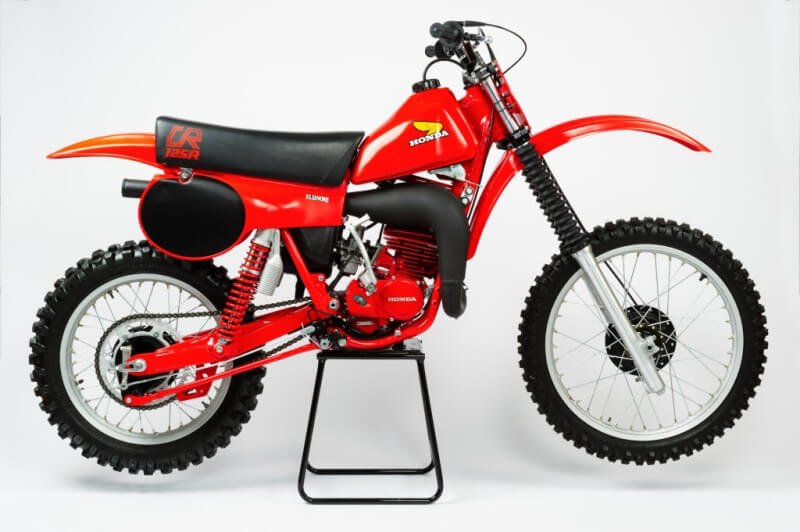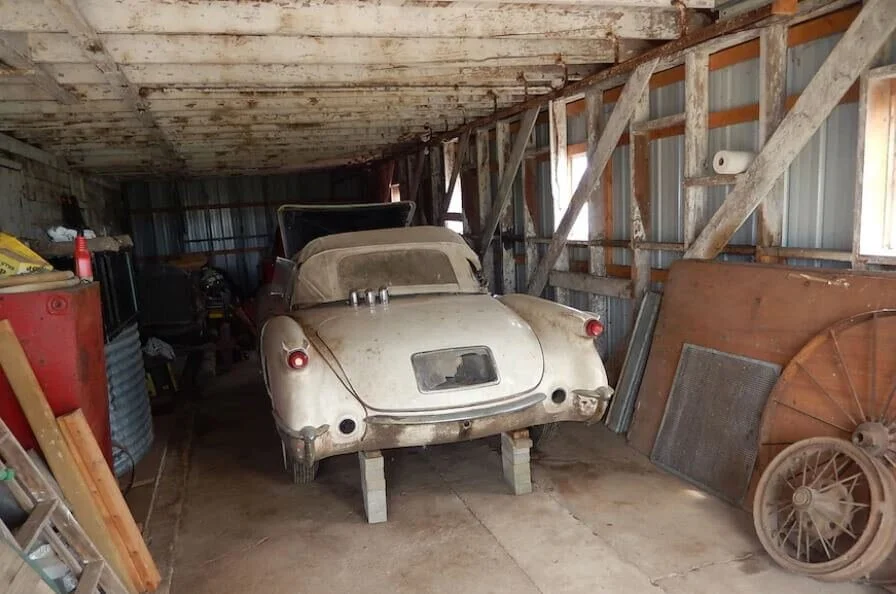Are you prepared for a roadside emergency? When you get behind the wheel, you must be ready for anything that comes your way. With an emergency roadside kit, you’ll have the tools you need to get you through anything that might happen.
Take for example, the woman in California that drove off a 200-foot cliff. Not only was she able to break out of her car after it hit the water, but she managed to survive for seven days before she was finally found. How? She was well prepared.
A roadside emergency can happen because of an accident like this one or by simply having a breakdown with your vehicle. Either way, you want to know that you have everything you need so that you can survive any event. This is even more critical during the winter weather months.
That’s why we’ve put together a list of the top nine reasons to carry an emergency roadside kit with you at all times along with a helpful list of all the items we think you should carry in a well-stocked roadside assistance kit. We have compiled a full list of the items needed to build a fantastic roadside emergency kit to store in your car, truck, or SUV. Find it at the bottom of the page and check out this related article for tips on how to winterize your car and keep it running during the cold months.
Find the complete list near the bottom of the article.
1. Jump Start a Dead Battery
The biggest reason that a car won’t start is a dead battery, especially in cold weather. Instead of waiting for AAA emergency roadside assistance, you can use your jumper cables or jump box and get back on the road. There’s a big selection of portable jump starters on the market these days that don’t require anyone else to get you running again. These are handy to have with you if you have the room for it.
2. Inflate or Change a Tire
The last thing you want to think about is having to change a tire when the temperatures go below freezing, but you need to consider it. Your hands won’t want to cooperate and your nice leather gloves might not give you the grip you need. That’s why you should stow a pair of high-quality gripper gloves in your road kit.
With some quality gloves, you’ll be able to hold on to those tires no matter how cold it is. And if you have to stop and put on snow chains, you’ll find that they won’t stick to your skin, which can be highly uncomfortable.
Another thing to consider is carrying around a portable air compressor. These small tire inflators work wonders when you need some air in your tire on the go.
3. Perform Basic First Aid
If you are in an accident and need to bandage a wound, you’ll need the equipment to do that appropriately. Your roadside emergency kit could make the difference needed to keep you alive until help arrives.
4. Tow a Stuck Car
If you’ve ever driven in winter weather, it’s likely you’ve seen plenty of cars in a ditch. By packing a tow rope in your emergency roadside kit, you’ll be able to help others get back on the road. It could also help you if your car ever ends up in that ditch as well – just latch on to someone else’s car! With permission, of course.
5. Start a Fire
Your car’s heat will only keep you going for so long. If you get trapped in a secluded area and aren’t rescued right away, you need to be able to start a fire. That’s why it’s a good idea to have a fire starter, matches and lighter in your roadside emergency kit. Building a fire could make all the difference in your chance for survival.
6. Break a Window to Escape
Just like the woman we referenced in California, there could come a time when you need to break out a window to save your own life. Look around the driver’s seat of your car; do you have anything that would help you accomplish this task?
Having such a device in your emergency roadside kit could give you the tool you need to survive. If your door gets smashed in, you need to be able to break out and free yourself. It could also come in handy if you happen upon someone else trapped in their vehicle.
7. Tighten Hoses and Belts
Let’s say you are traveling in the countryside and you start to hear a squeaky fan belt or you notice steam coming from a leaky hose. What would you do? The best solution would be to attempt to fix it so you don’t break down. That’s when you need a quality multi tool in your roadside emergency kit. These handy devices have everything you need to repair that squeaky belt or tighten your leaky hose in a jiffy.
8. Cut Your Seat Belt Off
A device that’s meant to save your life shouldn’t be allowed to get in your way. If you’re ever involved in a rollover accident, you might face a jammed seat belt. Having a cutting tool in your safety kit or as part of a multitool helps you remove the seat belt and cut yourself or a passenger free, avoiding a potentially serious and painfully ironic situation.
9. Direct Traffic
ability to alert the oncoming traffic, if you break down you become a sitting duck waiting for a collision. Having warning triangles in your emergency kit allows you to warn other drivers that there’s a situation up ahead. Place one down the road or around the corner to indicate that there is a stopped vehicle ahead.
You could also pack a reflective emergency vest to wear if you need to get out of your vehicle or make repairs on the side of the road.
Roadside Emergency Tips
Now that we’ve given you the top reasons to carry an emergency kit, here are a few more tips that will help you survive almost any situation.
Always keep a cell phone car charger with you. In today’s world, you need a charged phone so you can reach out for help in an emergency. It might even be worth it to carry a solar charger with you in the car.
Carry a small stash of cash. If power is lost due to inclement weather, you won’t be able to get gas with your credit card. If you find a station running on a generator, you still have a hope of fueling up with your cash.
Put a clean, empty gas jug in the trunk. Carrying around a full gas tank is dangerous. Keep it empty, but have it in case you ever run out of gas and need to find more.
Check your fluids often. Especially before you head out on a long journey, you want to check all your fluids. This includes your transmission fluid, antifreeze and oil. You want to make sure they are clean so your vehicle can run at its best.
What Does a Good Roadside Emergency Kit Contain?
Whether you build your own roadside emergency kit or you purchase one ready-made, it never hurts to be over-prepared. Here are all the items you could have in your car to prepare for any emergency situation. This might seem like an overthought list, but every item has an express purpose. Buy a plastic case, canvas bag, or cardboard box to store these items inside your vehicle’s cargo area.
General purpose:
Clean plastic bags
Duct tape
Rags or paper towels
Multipurpose tool
Ice scraper
Umbrella
Hand sanitizer
Trash bags
Cell phone charger
Fire starting kit
Car repair:
Empty, clean gas container (two to five-gallon capacity)
Jumper cables (in the correct gauge for your vehicle)
Portable jump starter box
Portable inflator or “flat fix” canister for your tires
Spare tire and jack, preferably the originals for your car
Spare fuses
Small tool kit with at least pliers, screwdrivers, adjustable wrench and vise grips
Tire pressure gauge
Antifreeze
Oil
Washer fluid
Penetrant fluid (for breaking loose stubborn hardware)
Health and safety:
Roadside flares
Safety triangle
First aid kit
Two to three gallons of bottled water
Power snacks like granola bars
Flashlight (plus extra batteries)
Folding shovel
Escape tool (needs to have a window breaker and seatbelt cutter)
Blankets
Road map
Gripping gloves, wool socks, hat and boots
Car fire extinguisher (get one specifically designed for car fires)
Pen and paper
Towing chain or strap
Build a robust roadside emergency kit and you will be prepared for just about anything the world might throw at you.
Homemade vs. Pre-Assembled Emergency Roadside Kits
If you’re just getting started, purchasing a pre-assembled emergency kit might be the way to go. However, creating your own kit has its own list of benefits.
First of all, you can tailor it to fit your needs. For example, if you live in Florida, chances are you won’t need an ice scraper. Furthermore, if you have a family or pet, you’ll need to pack additional things like diapers and pet food in your roadside emergency kit. The biggest advantage of creating your own emergency roadside kit is that you’ll know what’s inside. Because you purchased it and packed it up, you’ll be able to find everything easily when you need it.
Pre-packaged roadside emergency kits can be a great place to start but putting your own roadside assistance kit together has many valuable benefits. Our suggestion is to go that route.
Don’t Take Chances on the Road
Packing an emergency kit is a must-do activity that you don’t want to procrastinate with. Whether you need a set of jumper cables or just some band-aids to get you through that next emergency, you’ll be glad you took the time to put together your own roadside emergency kit. Don’t rely on AAA emergency roadside assistance. Take steps to protect you and your family with a thorough and proactive roadside emergency kit.
Title Gods is your emergency kit when you face trouble with titles. Consider us your lifeline when you encounter difficulty getting that car you want or selling a vehicle. We’ve seen it all and can do it all – from start to finish. Give us a call today and save yourself from the hassle.
We are not attorneys. This article is not legal advice. Cover image source



















Keep in mind that a tire’s PSI drops one point every time the temperature goes down ten degrees. Older cars don’t come with a warning light, so we recommend checking tire pressures at least once per week in the winter.